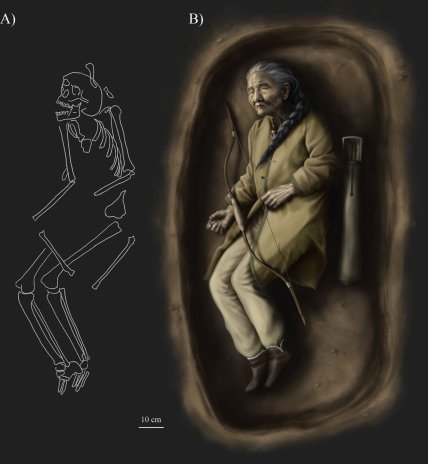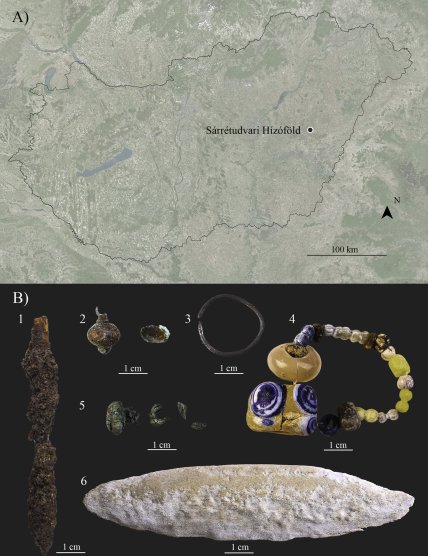In Hungary, a unique skeleton of a woman with an unusual "profession" has been discovered (photo).
A burial site has been discovered in Hungary, where the remains of a woman were found. What makes this find unique is that the woman had weapons with her.
This is mentioned in a recent study published in the journal PLOS ONE. Although myths about Eastern European women warriors in the early Middle Ages have long been debated among historians, their existence has not yet been confirmed by compelling archaeological evidence.
Identifying the findings is further complicated by the fact that remains are often poorly preserved over time, making it difficult to determine the gender of the deceased. An even greater challenge is that burials do not always indicate whether the person was indeed a warrior. However, there are certain clues that can hint at what these individuals did in those distant times.
The skeleton, bearing the mundane designation SH-63, was discovered in the burial site of Sharretudvari-Khizoföld. This site is the largest burial ground from the 10th century in Hungary, where skeletons with weapons and horse gear are typically found. During that time, the Hungarians had already crossed the Carpathians and settled in their current homeland, yet they had not yet converted to Christianity.
They also retained their steppe traditions, including a penchant for raiding neighbors. A distinguishing feature of their army was the lightly armed cavalry with bows, used for these quick raids.
Items related to warfare are primarily found in "male" burials at the Sharretudvari-Khizoföld cemetery — arrowheads, sabers, and sometimes axes. Female graves typically feature adornments such as beads, hair rings, metal artifacts, bracelets, and rings.
The grave SH-63 turned out to be something in between. Hair rings, a necklace made of stone and glass beads, arrowheads, quiver parts, and a bow overlay made from deer antler were found there.

This prompted archaeologists to take a closer look at the skeleton and conduct genetic and morphological analyses. Their hypothesis was confirmed, making this find the first known woman buried with weapons in the Carpathian Basin in the 10th century.
During a detailed examination, signs of osteoporosis were also found. Although this condition occurs in both sexes, it most commonly affects older women. Thus, this gives reason to suggest that SH-63 was not young at all.
Additionally, three distinct traces of injuries to the upper limbs were observed, which may indicate that she had fallen on her outstretched arm or shoulder several times in her life. These injuries never fully healed, but how she sustained them remains unknown to researchers.
Furthermore, various changes were noted in the joints and at the muscle attachment points to the bones, particularly on the right side of her body. Similar changes have been found in other graves where weapons were discovered.
Scientists state that further research is needed to determine whether SH-63 was a medieval Hungarian warrior. However, even without this, the find is unique.

As previously reported, scientists discovered a seed from a tree that had lain in a cave in the Judean Desert for a thousand years. Despite its age, they managed to germinate it and realized that these trees no longer exist.